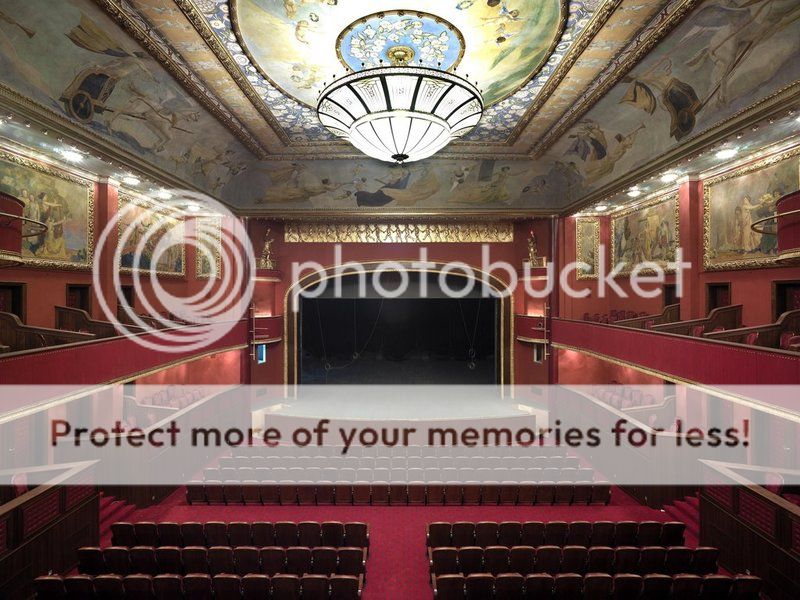GPS : 40°59'16.9"N 29°01'43.6"E / 40.988028, 29.028778

PHOTOGRAPHS ALBUM
Probably the most important cultural building is the Süreyya Opera Building. Its construction started in between 1923-26 thorough the efforts of Süreyya İlmen Paşa at the most beautiful point of the famous Bahariye Street, and was inaugurated in 6 March, 1927. The main purpose of Süreyya İlmen in initiating the construction was to make a contribution for the modernization and development of the cultural and artistic life in Kadıköy, as well as providing a source of honour for the district thorough this occasion.
Notwithstanding its name, for many years it wasn’t possible to perform an opera piece in the building for most of its existence since the necessary equipment for staging one was lacking. Instead, it was chiefly used for displaying cinema films and therefore came to be known among the populace with the name “Süreyya Cinema”, and was administered for that purpose by Süreyya Paşa’s grandchildren until 2005.
Since the stage of the musical theatre was not wholly completed and no artist’s rooms were provided, operetta performances did not take place at all. Only theatre plays were performed some days a week. In 1930, technical equipment needed to screen sound films was installed and henceforth the venue was renamed “Süreyya Sineması” (English: Süreyya Cinema). Hikmet Nazım, father of the renowned poet Nazım Hikmet, was appointed the movie theatre’s first manager.
The frescoes of the building were seriously damaged during the time it was loaned to commercial institutions after the death of Süreyya İlmen Paşa in 1950, when it was leased to Darüşşafaka (literally “home of compassion” in Ottoman Turkish) Association. Until roughly one decade ago, the building was largely in a neglected and devastated state.
Süreyya İlmen donated the theatre in 1950 to “Darüşşafaka Cemiyeti”, a charitable organization for the the advancement of education of orphan children in poverty, with the condition to receive the revenues during his or his wife’s lifetime. He died in 1955 and his wife Adalet İlmen in 1966. The cinema, taken over by the charity society, was then run first by the daughter and then by the grandsons of Süreyya İlmen.
The ballroom at the second floor served for many years as a wedding hall. It hosted the theater group “Kadiköy Sahnesi” (Kadiköy Stage) five years long from 1959 on. Later, the space was used as an apparel workshop.
The audience hall of Süreyya Cinema was renovated in 1996, and the technical equipments were modernized with state of the art in 2003. Also the exterior of the building underwent a reconditioning in accordance with the original. However, all these efforts and the investments made for modernization did not bring the expected result to attract audience.
By the beginning of 2006, Kadiköy Municipality launched a redevelopment project after leasing the building in August 2005 from Darüşşafaka Cemiyeti for a term of 40 years. The restoration included the frescos at the ceiling and on the walls, and the sculptures on the facade. The construction works lasted almost two years. Süreyya Opera House reopened on December 14, 2007 performing the oratorio Yunus Emre (Opus 26) by Ahmet Adnan Saygun. Thus, Süreyya Pasha’s dream of an opera house came true after 80 years.
After the efforts of the municipality of Kadıköy and other people behaving on their own initiative with charitable purposes, the opera house passed thorough a massive and dramatic renovation, after the conclusion of which it was inaugurated for a second time on October 27, 2007. Since this date, the building has served many lovers of arts and especially opera more in accordance with the wishes of Süreyya Paşa, and today continues to be an indispensable center of cultural and social entertainment in one of the most central areas of Kadıköy.
One of Kadiköy's first theatres, the Süreyya was strikingly different from any other theatre, particularly in terms of its foyer and auditorium. Western-style frescoes and ornaments cover the interior ceilings. There is box seating on both floors in the auditorium. The house also includes a ballroom. All along the façade, rectangular plasters with Corinthian capitals separate the windows and there are bas-reliefs and masks between them. Statues of women flank the elliptical pediment in the centre of the parapet.
On either side of the door opening into the auditorium from the foyer are staircases leading to the balcony and upper floor boxes. The frescoes on the ceiling of the opera hall were painted by Naci Kalmukoglu (Kalmukov, originally Russian). The sculptures on the façade of the building as well as those around the proscenium arch were made by Ihsan Özsoy, who is considered to be one of the first Turkish sculptors.
The theatre stage has dimensions of 14 m width, 10 m depth and 4.90 m height with an orchestra pit added newly. There are 14 dressing rooms built without changing the architecture of the building. The audience capacity of the opera house is 570 seats. The ballroom on the second floor can accommodate 500 guests.
The opera house is home to Istanbul State Opera and Ballet. Opera and ballet performances are staged three days a week at the venue. The house hosts also events like arts exhibitions and festivities like the Republic Day Ball. The Kadiköy Municipality Süreyya Opera House has been refurbish into a venue for the Istanbul State Opera and Ballet.
LOCATION SATELLITE MAP
WEB SITE : Kadıköy Belediyesi Süreyya Opera Sahnesi
MORE INFO & CONTACT
E-Mail : bilet@dobgm.gov.tr
Phone : +90 216 346 1531
These scripts and photographs are registered under © Copyright 2017, respected writers and photographers from the internet. All Rights Reserved.
No comments:
Post a Comment